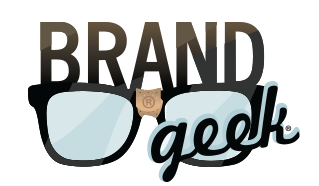GoLite is Going Out Of Business . . . Since its…
Brandvangelism: SF MusicTech Where Music Culture and Commerce Converge
Some brands make it easy to love them. Think: Patagonia, Subaru, Techtastic and SF MusicTech Summit (SFMT). Yup, that’s right. SFMT is one of my favorite conferences although I am neither a musician nor a technologist (to the contrary, I often refer to myself as a technofuck, but let’s not go there.) I first attended SFMT in 2008 and was hooked straight away. SFMT brings together music lovers of all types — artists, managers, inventors, investors and more — to share and learn about the current state of the music business and to do business with one another. And as all business people should know, few things are better than doing business with people who share your passion. So, Kudos! to Brian Zisk for putting together another kick-ass conference!
Not only do I learn something each time I attend SFMT, but I also always manage to make great new friends, including Danny Kirshner of MiracleTicket.org (who couldn’t use one now & again?), Rob Kaye of MusicBrainz (if you got ’em, flaunt ’em), Kyla Fairchild of No Depression (Amen!), Greg Lucas of CreativeAllies (Hallelujah!) and the Magnificent Ohm brothers — Brian & Dylan — of Covalent Records and dozens of other cool projects. This fall SFMT overflowed into a full MusicTech Week, which included SFMT HackDay (summarized here), the bi-annual Summit and more live music than anyone could possibly see. What’s not to love?!?
Here’s just a smattering of the things I learned at SF MusicTech:
- The best time to post to Facebook is 3pm on Wednesday, followed by 1-3 on Wednesdays, followed by 1-3 Thursday and Friday. Posts made between 8pm-8am are least shared.
- Facebook posts have a shelf-life of 3 hours. Post more often than that and you risk diluting your engagement.
- Facebook broke the 1 billion monthly active user mark in September, 2012.
- 100mm digital albums were sold during 2011 and that record is set to be broken this year, according to Nielsen.
- For the most part, radio spins YouTube plays and Spotify plays lead to high numbers of iTunes sales.
- Radio play no longer drives album sales.
- User-generated content (UGC) isn’t yet measured because it is harder to measure and less reliable than band activity and content on official websites / pages / feeds, etc.
- Future music industry R&D includes forecasting for album sales, concert tickets sales and merch sales, as well as benchmarking compared to similar artists.
- Next Big Sound is a music analytics company whose passion is data porn.
- Jeff Price is a funny guy with very few boundaries, save that nasty NDA.
- Colin Brumelle is a data geek, I mean, software engineer at Twitter — where they apparently let the smart people play with data at night.
- Twitter is all about music: 30 of top 50 & 7 of top 10 Twitter personalities are musicians!
- Barack Obama, Kim Kardashian & YouTube are the 3 members in the Twitter top 10 who are not musicians.
- You can measure how well you are connecting with your audience on Twitter: first, measure engagement — the sum of all interaction with your Tweets (replies, retweets, favorites, follows & clicks) then to get your engagement rate, divide the sum of all engagements by the total number of impressions for the same Tweets.
- Tweets with the highest engagement rates include: photos; intrigue/innuendo; authentic voice.
- Most folks Tweet 4 times a day.
- Tweets have a shelf life of 9.9 minutes, so it’s key to know when your target audience is likely to be on Twitter & Tweet only then.
- Twitter has a quick guide for musicians & artists: Dev.twitter.com/media/music.
When smart and interesting people with shared passions converge, good things happen. Useful information and awesome connections abound at SFMT. Won’t you join me at their next Summit?


Comments (0)